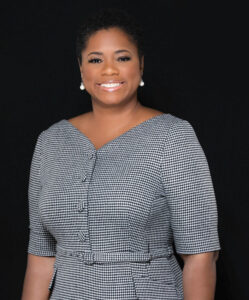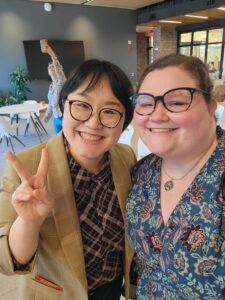Building an Inclusive Climate Movement

On August 21-22nd, I attended the Global Ties summit, Building an Inclusive Climate Movement in Burlington, Vermont. This was my first trip to Vermont, and it was a wonderful introduction to the state and the work that the Vermont Council on World Affairs does within the Global Ties network and the IVLP program.
This summit was specifically geared towards climate change and inclusive ways to reframe the way we think about it and inspire new, creative ways to tackle this global issue in our own communities.

The Keynote speaker, Tamara Toles O’Laughlin, offered a thorough and in-depth presentation on her work on climate strategy and environmental advocacy. Specifically, I was interested in the redesign of climate action to include the voices of women, African Americans, refugees, and other minority groups. She says that the root causes of climate change are racist standards, cultural norms of oppression, suppressed data on cumulative impacts, uneven narratives about tech fixes, dismissal of open questions, and real resource scarcity bolstered by each of these issues. Her Theory of Action included new agreements generated by a practice of truth telling, care, and repair. This practice builds strategic interventions in support of global, antiracist, and celebratory climate action with a through line of accountability to reshape democracy in response to the threat of the climate crisis.
This conversation resonated with me because having lived in areas which were redlined, the issues of these previous government policies have real impacts on people today in regard to climate change. People of lower economic status have higher rates of asthma, heat stroke, and cancer risks due to unequal access to trees and polluted air. They often are 75% more likely to live near odor, traffic noise, carbon admissions. They also have inequitable access to energy-saving buildings due to rent inflation and inequitable access to hybrid vehicles because the cost is too great. They are not educated of policies and programs available to them to help access energy-saving home renovations—such as the installation of energy-saving windows— or energy-saving programs through their utility companies. These inequities disproportionately affects African American women and other women of color.
As Tamara Toles O’Laughlin stated in her presentation, the current Inflation Reduction Act does not affect people in their daily lives and therefore do not matter to them. Communities are more nuanced and networked than supposed by outdated approaches.
Her speech was incredibly sobering. At the end of her presentation, no one clapped. This was not because we did not appreciate her speech, but because it really made us think. It was one of the most impressive opening keynote speeches I have ever attended. It was a great opening to the summit.
As I listened to her talk, though, I thought about the City of Cincinnati’s Office of Environment and Sustainability’s 2023 Green Plan. It specifically states:
“The Green Cincinnati Plan is committed to equity—with an explicit focus on racial equity. We acknowledge Cincinnati’s demographic makeup and our history of injustices. We believe that we will be better able to create an environment where all Cincinnatians can thrive by explicitly centering race in our efforts. The GCP will have an intentional focus on addressing the needs of the people and communities who experience elevated burdens from climate change and on an equitable distribution of benefits moving forward. We commit to embedding racial equity throughout the engagement process, written product, and implementation of the Green Cincinnati Plan to ensure accountability and impact.”
When I have delegations come in through the International Visitors Leadership Program (IVLP), I often like to have them meet with our Office of Environment and Sustainability to talk about the 2023 Green Plan. This is a plan that is incredibly important for us to showcase that we are not just working on climate change but reframing it so that no one bears
“an outsized burden of environmental threats, ecological manipulation, or be excluded from decisions that determine their future for any reason, particularly for profit“
as stated by Tamara Toles O’Laughlin in her closing remarks.

Syejeong Kim (left), CRDF Global Program Officer
After a quick break and some selfies, I headed to first of two breakout sessions.
During the breakout session, Creating Accessible Climate Solutions, the presenters did a great job talking about vulnerable communities which suffer climate disasters differently. One of the presenters spoke about how, while the rest of us were inside and sheltering from the Canadian wildfire smoke, vulnerable populations like immigrants and refugee were riding around on the bikes to deliver food for apps like Uber Eats, Grub Hub, Post Mates, and Door Dash. This really spoke to me because I know that while I was worried about making sure I didn’t go out into the smoke and my air at home was clean, I also ordered food through Door Dash. It made me re-evaluate how I, myself, and other people who have the luxury of staying in don’t have a second thought because it is easy to forget that the people who are out driving or biking around to deliver food can’t afford to. I think this was an important lesson, and currently relevant one, for everyone to take away from this issue.
Another speaker during this meeting highlighted the barrier risks for individuals for people with disabilities. These included: those with hearing disabilities being unable to hear sirens or bells, displacement or being unable to access safety, emergency personnel are not trained to assist those with disabilities (no ASL translation, etc.), heat illness for those who are unable to access shade or water, no personnel training to assist with people with mental illness/ emergency disaster facilities not having the training to assist people with mental illnesses, etc. There is also a lack of structural security for minorities. Mobile homes parks are especially vulnerable to climate disasters. Therefore, it is imperative to rethink our solution—to go from response to resilience. We must look at climate change and the barrier risks for individuals through a racial lens. The barriers to rethinking our solutions, though, are that communities are now being asked to provide more support with less money, as well as moving at the pace of trust—if solutions don’t happen quickly enough, the community moves on.
So, the first step to overcoming these barriers is to hear what the community needs. We must listen to them and adjust our plans. If a course of action is not working, we must be able to come up with a different solution. Looking to our community and its resources is a good way to adapt. Nonprofits, donations, investments into localized response mechanisms. The community already knows what works best for them. Rather than working with a top-down approach, it would be more beneficial to look at a bottom-up solution. We must also include the voices of BIPOC, people with disabilities, minority groups, refugees, the elderly populations, etc. because they are the ones who will be the most affected.
Cincinnati and Northern Kentucky have great resources available to begin this hard work of creating a bottom-up solution. Green Umbrella is a great example of this.

Green Umbrella serves as the regional sustainability alliance of Greater Cincinnati, with hundreds of member organizations and individuals passionate about enhancing the environmental health and vitality of our region. Their goal is to facilitate collaboration among non-profits, businesses, educational institutions, and governmental entities to meet the environmental, social, and economic needs of today while preserving the ability of future generations to thrive. They have united around the Collective Impact model, which has produced remarkable results for the STRIVE Partnership, the collaborative that promotes innovation in our local education system. The model teaches that success requires having a common agenda, using a shared measurement system, supporting mutually reinforcing activities, and maintaining continuous communication.
Green Umbrella states that it is the “backbone organization” that helps all member organizations work better together to promote a more environmentally sustainable region.
It is important to note these things about our region because the work they do is so important. Our local resources help guide our region into a better future. I would also like to thank the network and all of those in the community who work so diligently on these issues. Our local resources help guide our region into a better future.
I am so glad that I had the opportunity to travel to Burlington to attend this summit. The message of this summit is that building an inclusive climate is not something that only politicians can do. It is a choice that we make each and every day. We have to make the conscious decision when we wake up to remember that it is up to us to do our part. However, we are not alone. Our community fights for a better tomorrow together through sustainable efforts, equity, and inclusion.


